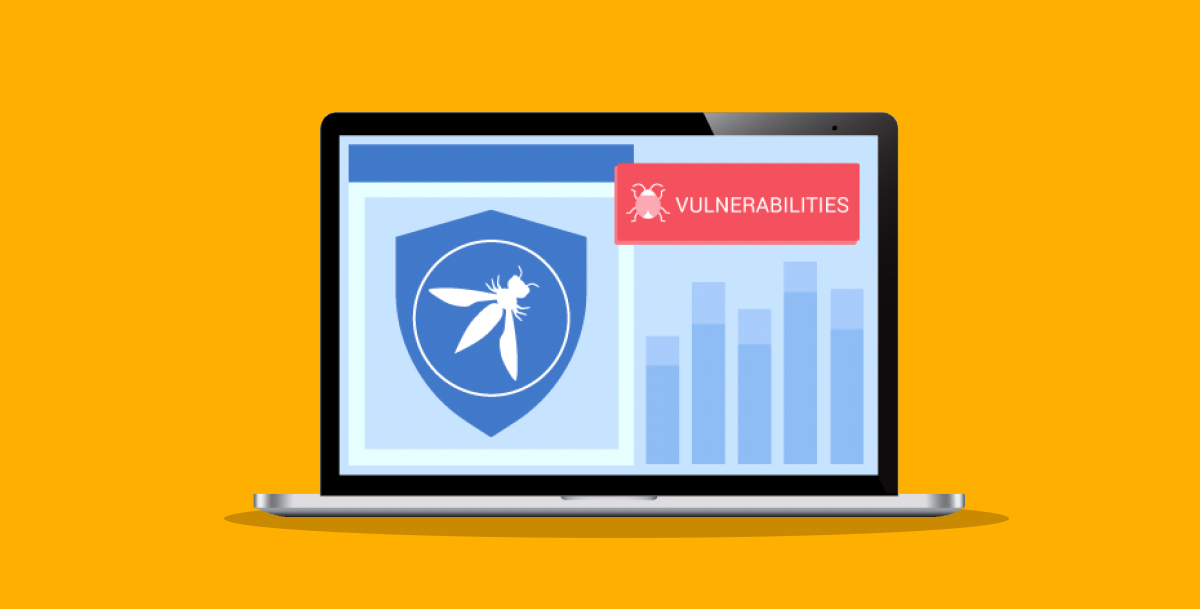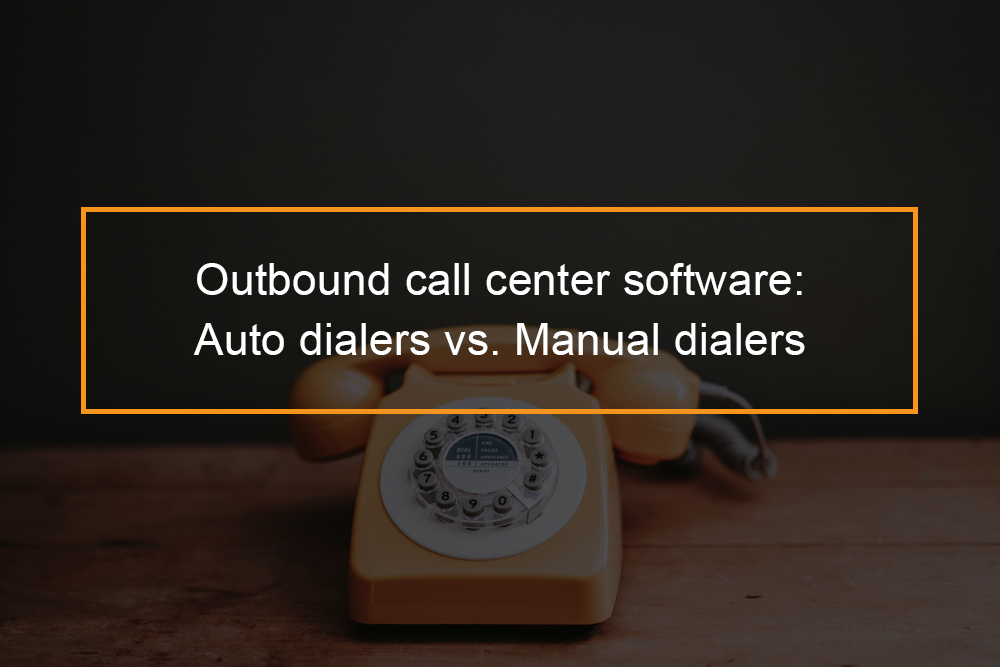
Some time ago, video calling or communication was a luxury and so required costly and complex devices and skills. Today, you will literally carry it in your pocket. You can participate in and hold video conferencing sessions on your smartphone as well as, mobile handset as well as on your computer with simple hardware and then adequate Internet connectivity.
What is video conferencing?
A complete definition of video conferencing
A video conference is a live, visible connection between two or more people residing in separate regions for the purpose of communication. At its simplest, video conferencing gives transmission of static pictures and text message between two locations. At its most complex, it provides transmission of full-motion video images as well as, the high-quality sound between multi- locations.
Client services — like Apple’s FaceTime, Google’s Hangouts as well as, Microsoft’s Skype — have made video communicating ubiquitous on desktops and mobile devices that have an embedded camera. In the business world, desktop video meeting is a core component of unified interactions applications and Web conferencing services, whereas cloud-based digital meeting room services permit organizations to deploy video conferencing by having minimal facilities investment.
Different Ways to Hold Video Conferences
There are a variety of methods of video conferencing can be conducted. People may use web cameras connected to our built into laptop, tablet, or personal pc computers. Mobile phones equipped with cameras may also be used to connect for video conferences. In such instances, a software-based platform ordinarily is used to send communication through Internet protocols. The stability and quality of the video meeting may vary with the speed and reliability of the data connection.
Some businesses use specialized video meeting rooms that have been equipped with high-grade video cameras and monitors to ensure the conversation is clear and with limited complex faults. Third-party providers frequently install and assemble the hardware needed to conduct the video conference. Businesses with plenty of offices may establish immediate video communications between all their locations in order to allow all their teams to work together. Video conferencing can be used as a training tool, with the instructor instructing a remote class coming from just about anywhere. This can be applied in a corporate context, especially for getting employees the knowledge they need to carry out their works better. In education, a traditional classroom environment can be connected with learners who are based far away from the school.
Video calling may also be used to carry out regular appointments with company personnel or to discuss with stakeholders about the latest activities at the business. It may be used to announce critical changes at a company, such as introducing a new CEO or to present details in an interactive way that allows all individuals to engage in conversation about what they see on display.
Hotels as well as, conference centers sometimes make video conferencing services available to guests who also require these types of services. This may be offered in conference spaces or suites that have been equipped for this purpose.
What are the requirements for video conferencing?
What you need for a nice video conferencing experience?
Below are the system equipment and specifications required to carry out video conferencing smoothly.
Video conferencing equipment
Computer or Video-Conferencing Machine
Video conferencing machines are devices capable of web communications right out of the box since they include all the necessary equipment. You can also use a computer with the right components and program, such as a webcam, headphones or mic, a broadband connection, screen or other display appliances, and internet conferencing computer software. Microsoft Office Live Meeting Professional is a good example.
Webcam or Camera
These vary from a typical webcam to an orbital video camera, which can be moved as well as focused via the accompanying program.
Monitor
If you are the only individual at your location, any computer screen should be enough. If you have a large group, a larger monitor (or perhaps projector) will be needed because the participants will be far away.
External Microphone
An external microphone can be a personal headphone, which can be a cost-effective solution if you will be the only individual in the video meeting at your location. In large group scenarios, omnidirectional microphones have the ability to better record and transfer dialogue from your location.
Broadband Connection
While technically online video conferencing can be done over a dial-up Internet connection, to have a quality connection and low lag concerning communications, a high-speed connection between every participating places is a necessity. The best options for video-conferencing connections are DSL and cable connections, as well as T1 lines.
Minimum set-up requirements for video conferencing
To send or get video with a resolution of 360p, ensure that your system satisfies the following minimum preferences:
Send
- A good webcam capable of producing high-quality video.
- A computer with 1 GB of MEMORY and a dual-core processor.
- A fast network connection.
Receive
- A computer with 1 GB of MEMORY and a dual-core processor.
- A fast network connection.
To send or get video with a resolution of 720p, ensure that your system satisfies the following minimum preferences:
Send
- A good webcam capable of producing HD video.
- A computer with 2 GIGABYTES of MEMORY and a quad-core CPU.
- A fast network connection.
Receive
- A computer with 2 GIGABYTES of MEMORY and a dual-core processor.
- A fast network connection.
What are the benefits of video conferencing?
Advantages of video conferencing
Below are seven advantages of using video conferencing
No Need To Travel
Travelling requires time and patience. It is also expensive to travel to meet people. With video conferencing, you can organize as well as, hold a meeting within the hour with participants coming from remote locations all over the world. They only need to have the necessary gear and be present in front of the screen during the chosen period. The pre-meeting organization can be done via instant messaging or email.
Bind Your Mobile Workers
Your employees may be scattered around the city of around the country if they are mobile staff. They connect back to base by using their mobile devices. You can leverage this kind of existing cellular infrastructure to conduct video conferencing appointments with your workforce. In fact, the visible nature of video meeting even allows you to check the activities as well as whereabouts of your employees.
It Aids Telecommuting
Video conferencing is also an essential tool intended for telework or telecommuting- operating away from the office, frequently at home. If your employees or co-workers work from home, you can work around the absence of physical interaction within the team and the lack of downward guidance or upward reporting is usually video conferencing.
Organize Meetings Independent of Time
Now that meetings over the internet are free from the huge hurdle of travel expenses as well as, restrictions, they can be organized more often. Conferencing with individuals from different parts of the globe will be done frequently. Your business will then move at the speed that the world is changing.
Your appointments can be very short notice. Participants will no longer have justifications related to location and travel; they will only have to free themselves. This means conferences can be scheduled quickly and get it operating quickly. You can also easily find time for someone in a tight schedule.
Humanize Your Conversation
Take this point in contrast with voice conversation or email correspondence. A video is moving pictures, which is worth more than the two. By displaying yourself and seeing many more, you can use body language to your advantage, a critical aspect in business and other activities concerning human conversation. Also, looking at someone when talking to them totally changes the nature of a conversation, be it for personal or business purposes.
Show Things
Seeing is definitely believing, and then showing is convincing. By using video conferencing, you can write on a board and show it to everyone, display your recent product, or introduce a new recruit. Typically, you can show things that you cannot take along with you in your suitcase while traveling to a meeting.
Study and Tutor Online
There are great programs being offered and wonderful teachers coaching everywhere, but many of them are probably very far from you. If you are a teacher, your market may be far from where you are. Video conferencing is a great way of acquiring and sharing knowledge beyond obstacles. While it will not be like really physically present, the conversation is sufficient. You will be able to use multimedia features like online interactive whiteboards, and you can use online collaboration equipment.
What is the best video conferencing app?
Most popular video conferencing software
Due to the high increase in popularity of video calls, many different applications have come up to offer those services. Picking the best is difficult since they all have their pros and cons. It is up to the users to choose one that suits them well depending on their needs. However, we managed to come up with a list of the most popular video conferencing software out there.
Skype for Business
We just couldn’t round up the best of the video calling world without mentioning Skype. Or more specifically, Skype for Business, which will go above and beyond the service’s standard functions by tossing in techniques and capabilities that make it worthy of full business deployment.
This service provides advance scheduling, real-time screen sharing, VoIP support, and also accessibility across desktop, iOS, and Android devices, whereas up to 250 persons can be part of a single meeting.
Want to take this even further and hold a webinar? The upgrade you need is Skype Meeting Broadcast, which allows up to 10,000 attendees, complete producer settings, Bing Pulse polling, Azure streaming, and audience involvement via Yammer.
Being part of the Microsoft community makes Skype for Business particularly captivating for companies already working with an Office 365 corporate package, as the associated software programs come firmly integrated.
Even though it was not always the case, you now require a subscription to the Business Premium edition of Office 365 if you want access to Skype for Business. The subscription is priced at $12.50 a month if you commit to an entire year. If you want to pay monthly without shelling out for the whole year, the price hikes up to $15 per month.
TeamViewer
TeamViewer offers distant support as well as access in addition to internet meetings. In its own terms, the platform “allows subscribers to access their workplace PC from the road, video conference across town, and share their display for distant support from the other parts of the world.”
When it comes to features, there are a lot TeamViewer can do. We’re speaking system and contacts control, instant messaging, file sharing and whiteboard tools, distant audio and video, service desk integration and session recording tech, allowing users to manage incoming tickets directly from within their email software.
In terms of remote control of additional devices, subscribers can reactivate, print and install in addition to the usual settings, while reporting features to help you log incoming and outgoing connections. The feature also tells you who did what, when, and for how long.
Despite this wealth of features, making use of TeamViewer is fairly straightforward. Moreover, the software should easily fit into a company’s software timetable, especially with the in-built integrations with Freshdesk, Zendesk, Avira and others.
If your communications extent goes beyond English conversing borders, it shouldn’t be a problem, as you can run TeamViewer in more than THIRTY different languages. Pricing begins at $49 per month.
GoToMeeting
While TeamViewer is all about packing capabilities into a video conferencing app, GoToMeeting (from LogMeIn) delivers on the convenience and accessibility fronts.
Trimmed down when compared with competing providers, GoToMeeting does not have the chain of cooperation tools and remote access abilities which some other software has. It does, however, have unique features when paired with its glitzy UI.
First, up to 100 people can join an online meeting from their PCs, Android products, Macs or iPhone. Additionally, when using GoToMeeting, you can share any software you have on your computer in instantaneously. A useful scheduling device lets the host set up a meeting in advance while all guests come in free of charge. Clicking a link or joining a meeting ID is all that’s needed for attendees.
The in-call feel is improved by conference holders being able to see exactly what the participants are looking at via their dashboard, while presenter tasks can easily be handed over mid-call. The attendees are also capable of sharing their screen with the rest too. Built-in support for Lifesize, Cisco and Polycom gadgets were recently added.
So although GoToMeeting may not have the fancy features and remote control capabilities, as a piece of video calling software, it’s very difficult to criticize. Pricing begins from $14 per month, and if you want to set up your own meeting space specifically tailored to GoToMeeting, LogMeIn sells the software bundled with all the equipment you need to use it as well.
ConnectWise Control
A remote support, access and conference service all in one, ConnectWise Control, which was previously ScreenConnect, is best known for its friendly user interface, easy-to-digest features, and affordable monthly price tag.
The days when video conferencing only involved connecting two parties for a chat are long gone. ConnectWise enables you to run sessions with synchronous collaboration from multiple participants, control other machines wirelessly, customize the software’s overall look to fit your brand, change security configurations to fit the conformity needs of your customers, and many others.
There are a number of products and deals that can be tailored to the requirements of your organization. Compatibility is a plus. Your clients can be supported regardless if you’re signing into ConnectWise from a Mac or PC, or on the move via Android and iOS.
Pricing begins at $19 a month and is still reasonable going up the scale. This is a diverse and effective piece of communications program that gives you a decent bang for your buck – especially if your business requires remote support.
Zoom
Zoom is impressive. It’s the group call app that simply performs. You’ll initially need to install its apps, and then you can have a free video call with up to 50 participants as long as you don’t communicate for more than 40 minutes. Paid options let you chat with up to 500 participants at once, plenty for all but the largest groups.
The key is that it works great. In case your internet connection isn’t the best, Zoom ordinarily will keep your video going-though occasionally at a reduced quality level. Zoom is also light on your computer resources, with only average battery drain and processor usage in most calls.
With a full-length video, you can record any call. You can also keep a sub-conversation going in the text chat. And, you can share your screen, selecting to either show your whole display or just one of the apps you’re running. Zoom also lets you schedule calls in advance, chat whenever with any of your contacts, or connect to room conferencing hardware. The only downside is some small app irritation such as immediately going full-screen for all viewers when someone shares their screen. Apart from that, it’s a nearly perfect team video app.
Zoom Value: Free for up to 50 members for 40 minutes; from $14.99/month per host Pro plan for user management, unlimited conference length, and reports; from $55/month for 100+ members
Google Hangouts
With up to 25 contributors in free calls right from your browser, Google Hangouts is a fairly good contender for team video conferencing. It’s the best feature, probably, is its deep integration with Google’s other apps. You will get a Hangouts link that you and your team whenever you use Google calendar to create meetings, which you can press to join a call immediately. You can also find files from Google Drive and Apps and share them in chat, without having to leave your call.
The concern is that Hangouts can struggle with large group calls. This is due to the fact that it runs from your browser, it will drain your laptop battery much faster than Zoom, and doesn’t degrade calls as smoothly as Zoom if your internet connection is slow. That may improve, though; Google guarantees that Meet should be less resource intensive. And if you want to bring huge teams in your calls, you can use the new Hangouts conference room products for full-room video chats-and the Jamboard touchscreen unit for group collaboration. With everything considered, Hangouts just may turn into the best way to talk with your team.
Google Hangouts Value: Free; from $5/month as part of G Suite Basic for business teams
Cisco WebEx
From one of the leading producers of video conferencing equipment, Cisco WebEx is designed around cooperation. When you start a call, a digital whiteboard-with chat and videos will be shown at the main part of the app. Everyone in the call can then type, add shapes, draw, and highlight or annotate anything on the screen. This is an effective way to brainstorm ideas.
You can also hide the whiteboard if you just want a normal video conference. Or, you can share your screen, maybe to kick off the discussion and then brainstorm other ideas in the virtual whiteboard. It can even work for your bigger meetings, with WebEx Events that can let you broadcast to up to 3000 people with the same tools. Cisco’s companion Webex Teams adds one-click calls and the team chat to your video cooperation.
WebEx Value: Free for three contributors; from $24/month Premium 8 plan for up to 8 conference participants
What is the use of video conferencing?
Various applications of video conferencing
The application of video conferencing is very broad, from the field of education to law, it is widely applied. Below are some of the daily application of video calls and video conferencing.
Meetings or Collaborations
The biggest application of video calls is setting up conferences. It doesn’t matter if for business, enjoyment or training. Vital information can be talked over by executives or organization heads even though they are miles apart. Groups thinking about pre-planning a project can talk about details easily by applying features like screen sharing, whiteboarding, etc. An additional application here is student collaborations. One can effortlessly carry out group study sessions or student projects without moving around.
Online Teaching
Technology has made long distance learning into reality. Thus, an instructor no longer requires being in the same place as his students. Long distance education programs have been incorporated in syllabuses of both small as well as Ivy League schools in the USA. Even though the majority is in video course form, live web-conference courses play a major part.
Interacting with a huge number of people simultaneously is straightforward. All you do is make a video call. Questions can be answered regardless of the geographical area of the professional or students. Meanwhile, this technique can be used to teach learners in rural areas. You only need a proper setup. A competent tutor will be capable of teaching his students by making use of the process. Apart from the usual learner and tutor arrangement, it can likewise be employed to teach the fellow instructors or even connect with each other to share ideas.
Business Administration
During the past, it was actually out of the question to manage a business on the web. However, distant workplaces and virtual staff have become a standard setup with the intro of the web. Communicating through email, chat services, which includes video meetings have grown to be an important part in encouraging these types of companies. It is now feasible for the companies to make contact with their freelance designers, article writers, management staff along with other staff remotely. Besides bridging the gap, it also creates a more effective and global workplace with little attempt.
Video Interviews
Today, video calls or conferences are getting utilized by numerous sectors in an effort to reach a number of experts at once, get in touch with correspondents, recognize the potential workers for the organization, and much more. Leading media networks generally link diverse individuals for interview by making use of meetings. An internet transmission and an internet service program which provides video conferencing might help when the correspondent is not available. Each group will be benefited by the volume of cost savings which includes traveling time.
Different teams can easily interact with one another simultaneously even though they may be from diverse areas. Although it was once a complicated technology, today it’s feasible to effortlessly do meetings with more sophisticated mobile phone systems and quicker net services.
Working from Home
A lot more people nowadays are ready to work from home. Workers can use video calling to keep in touch with customers or colleagues in a realistic way. It will save you a considerable amount of time and energy as you avoid the hassle of traffic jams and subways. In fact, home-based work will be an ideal choice in case you were expecting mom and actually more and more people are taking advantage of tools like Skype or many other Skype options for their remote function. They can effortlessly hold an Internet meeting by just quickly installing and operating it on desktop or mobile.
Distance Diagnostics
The ability to identify a symptom or challenge from very far is referred to as remote diagnostics. In health care, it is practical for the affected person to be in the home or even overseas and the medical professional or professional could be in a different region. This technique is also used by astronauts in NASA while using cameras or remote calling for the assistance of the ground staff. Moreover, remote diagnostics is similarly employed by business telephones too, specifically those linked with PABX systems.
Legal Environment
Video calls are also used by a lot of courtrooms and authorized offices for connecting with reluctant prisoners or witnesses that do not want to appear in court for fear of their safety. The individual will actually feel like he is in the courtroom. It is sometimes better for a witness or a prisoner broadcast themselves electronically as compared to having them appear in person. People who do not wish to appear in court can also make testimonies by use of video calls.









